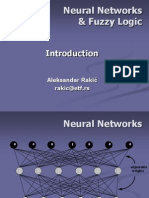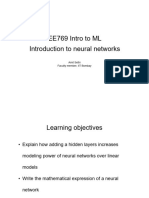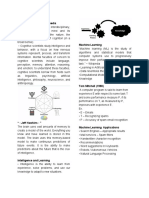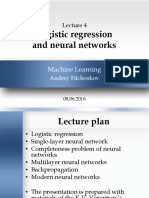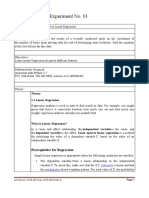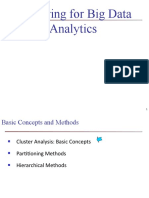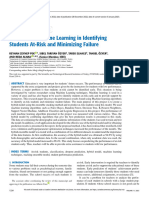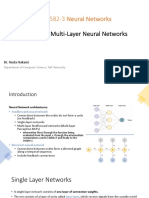0% found this document useful (0 votes)
8 views26 pagesLecture 3
The document discusses logistic regression and neural networks, explaining binary and multiclass logistic regression, their mathematical formulations, and the role of activation functions. It also contrasts shallow and deep networks, emphasizing the advantages of deep learning for approximating complex functions. Additionally, it covers gradient descent and backpropagation as key optimization techniques in training neural networks.
Uploaded by
Dream 11Copyright
© © All Rights Reserved
We take content rights seriously. If you suspect this is your content, claim it here.
Available Formats
Download as PDF, TXT or read online on Scribd
0% found this document useful (0 votes)
8 views26 pagesLecture 3
The document discusses logistic regression and neural networks, explaining binary and multiclass logistic regression, their mathematical formulations, and the role of activation functions. It also contrasts shallow and deep networks, emphasizing the advantages of deep learning for approximating complex functions. Additionally, it covers gradient descent and backpropagation as key optimization techniques in training neural networks.
Uploaded by
Dream 11Copyright
© © All Rights Reserved
We take content rights seriously. If you suspect this is your content, claim it here.
Available Formats
Download as PDF, TXT or read online on Scribd
/ 26



















